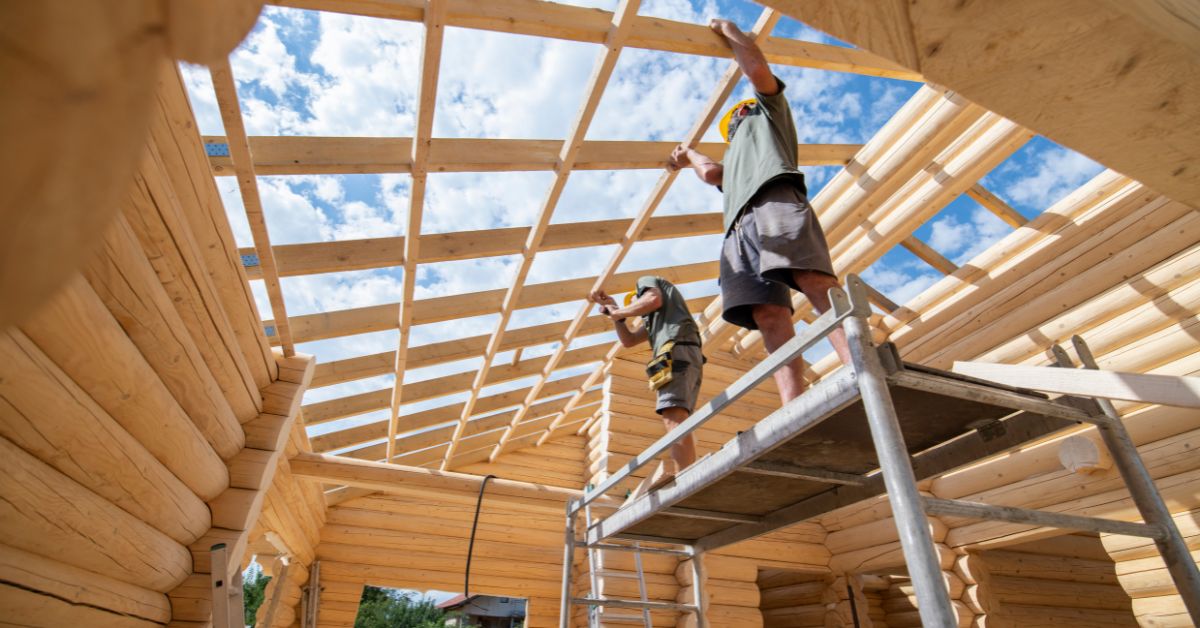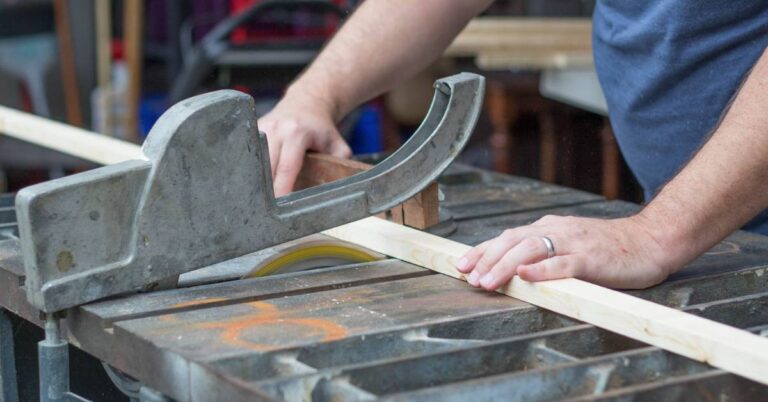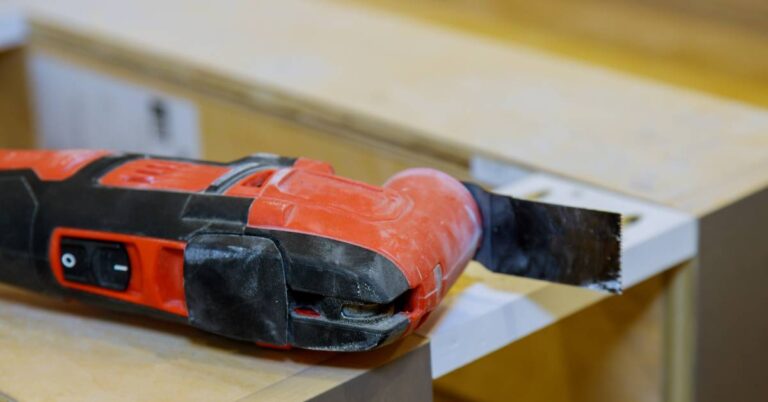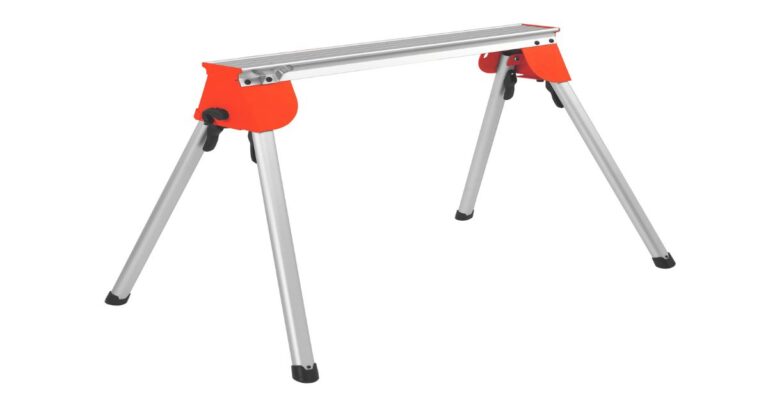Building Your Dream Log Cabin: Top Essential Tools for Success
Building your dream log cabin can be a gratifying experience, providing you with a cozy and comfortable retreat from the hustle and bustle of daily life. As with any ambitious project, the key to success is proper planning and preparation. Understanding the essential tools you’ll need for this endeavour is crucial to ensuring a smooth process and a beautiful final result.
We know that undertaking a project of this scale can be daunting, especially for those new to the construction world. Having the right tools in your arsenal will make your life easier and contribute to the longevity and durability of your log cabin. To help you achieve your dream, we have compiled a list of the fundamental tools you’ll need during various stages of your building journey.
From site selection and preparation to the actual assembly of the logs and the installation of necessary utilities, we are here to guide you every step of the way. Our knowledge and experience will serve as a solid foundation for your log cabin project, ensuring that you are equipped to handle any challenges that arise and that your finished abode is everything you’ve ever dreamed of.
Understanding Log Cabin Basics
History of Log Cabins
Log cabins have been around for centuries, dating back to the early Scandinavian and Baltic countries. They quickly spread to other parts of the world due to their simple yet durable design. Traditionally, log cabins were made from local wood materials, such as pine or cedar, which naturally resist decay. Over time, the design of the log cabin has evolved, but the basic concept remains the same – a home built from logs stacked and interlocked at the corners.
Why Choose a Log Cabin?
Log cabins offer several unique benefits. For one, they provide a rustic and natural aesthetic that many people find appealing. Log homes are also known for their energy efficiency and insulation, as the thick logs retain heat in the winter and keep the interior cool during summer. Wood as a primary building material also makes log cabins a more sustainable and eco-friendly choice than other construction types.
Log cabins have a rich history and provide a unique living experience. By understanding the basics of log cabin construction and the various materials used, you can decide whether a log home is right for you.
Planning Your Dream Log Cabin
Determining Your Budget
Before we dive into building our dream log cabin, it’s crucial to establish a realistic budget. We must account for materials, labour, permits, and other necessary expenses to do this. Start by making a list of everything needed for the project, and research the prices for each item. Consider any ongoing expenses, such as property taxes and maintenance fees. By clearly understanding the total cost, we can ensure our cabin remains both a dream and achievable.
Finding the Perfect Land
Now that we have our budget, it’s time to find the perfect land for our cabin. When searching for suitable land, consider terrain, accessibility, and proximity to amenities. Additionally, take note of any environmental factors, such as flood risks or protected wildlife areas, that may affect the building. Create a checklist of our desires and necessities, and compare potential properties to make an informed decision.
Criteria Importance
Terrain High
Accessibility High
Proximity to amenities Medium
Environmental factors High
Selecting a Cabin Design and Style
The next step is choosing a design and style for our log cabin. While countless designs are available, focus on finding one that meets our needs, reflects our taste, and fits within our budget. Some popular log cabin styles include:
- Traditional: The classic log cabin with a rustic and cozy feel
- Modern: A minimalist and clean design featuring large windows and more straightforward lines
- Scandinavian: Inspired by Nordic architecture, with a focus on natural light and eco-friendly materials
After deciding on a style, explore existing cabin plans or seek the assistance of an architect to create a custom design. Always verify that the selected plan complies with local building codes and regulations. By carefully considering these factors, we are well on our way to constructing our dream log cabin.
Essential Tools for Building a Log Cabin
Hand Tools
When embarking on a log cabin project, we must recognize the importance of hand tools in our arsenal. We must invest in axes and mallets for felling, hewing, and notching logs. A debarking spud will help us remove bark from our logs, while a drawknife will cleanly peel the logs and shape them to our preferences. We’ll also require a broad axe and sledgehammer for hewing our logs and chisels, wooden mallets, and flat pry bars for precision work. Adding log-working hand tools like log dogs, cant hooks, and log cleats to our selection will assist us in holding logs in place while notching and scribing.
In terms of quality, consider well-established brands like Husqvarna, Makita, Helko Werk, and Hults Bruk for durability and performance.
Power Tools
We’ll need various power tools to make our job more manageable and efficient. Essential tools to include in our collection are a cordless drill or electric screwdriver for assembling the cabin, a chainsaw with a sharp cutting blade for precision cuts, and a circular saw for cutting timber to size. A portable generator is essential for powering our tools at remote job sites.
Traditional Tools
It’s not only modern tools that are invaluable in our log cabin building project. Traditional tools dating back to the Stone Age have stood the test of time and still hold their place in our toolkit. These include the drawing knife, cant hook, peavey, broad axe, and hewing tools. Each tool has specific purposes, such as felling, hewing, and v-notch work.
To ensure the accuracy of our structure, we must also invest in quality measuring tools such as measuring tape, carpentry squares, log scribes, and spirit levels for level and plumb checks.
By equipping ourselves with top-notch hands, power, and traditional tools, we’ll be well-prepared to successfully build a sturdy and beautiful log cabin that we can be proud of.
Preparing Your Logs and Lumber
Harvesting and Selecting Logs
When building our dream log cabin, the first step is to harvest and select the correct logs. We want to choose straight logs with minimal taper, as this will make for a more structurally sound cabin. The ideal time to harvest logs is during the winter, when the sap is at its lowest, reducing the chances of insect infestation and decay. We should also select records from a species of wood that offers adequate strength, durability, and resistance to rot, such as cedar or oak.
Peeling and Debarking Logs
Once we have our logs, we need to peel and debark them. Peeling off the bark and outer layers of wood helps prevent insect infestation, rot, and decay while allowing the logs to dry more quickly. There are several methods we can use to remove bark, such as:
- Using a drawknife or a specialized tool called a bark spud
- Utilizing a pressure washer to peel off the bark with a high-pressure stream of water
- Employing a mechanical debarker for more efficient processing of large quantities of logs
Once the bark is removed, we can let the logs dry for several months, preferably in a well-ventilated, covered area, to allow the moisture content to reach an optimal level for construction.
Measuring and Cutting Logs
After peeling and drying our logs, we must measure and cut them to the desired lengths for our cabin. We’ll need a reliable measuring tape, a chalk line, and a method for cutting logs, such as a chainsaw or handsaw. Measuring and marking each log accurately is crucial, ensuring that our cuts are both straight and level.
When cutting the logs, we must follow a consistent pattern for the notches and joinery techniques, such as saddle notches or dovetail joints, that we’ll use to connect the logs at the corners and other junctions. We’ll create a structurally sound and aesthetically pleasing log cabin by ensuring precision and consistency in our measurements and cuts.
Log Cabin Construction Process
Building the Foundation
When building a log cabin, the first step is constructing the foundation. The foundation is essential for a stable and durable structure. We begin by choosing a location for the cabin and clearing the site, ensuring it is level and free of obstructions. Next, we excavate the area and install proper footings, such as concrete piers or a slab foundation, depending on the cabin design and local building regulations.
Once the footings are in place and set, it’s time to construct the cabin’s subfloor. We typically use pressure-treated lumber for floor joists and beams, with plywood or OSB decking on top.
Constructing the Walls and Roof
After the foundation is ready, we move on to constructing the log cabin’s walls. We start by laying the logs horizontally, with interlocking corner joints to provide stability. Depending on the chosen log cabin kit or builder, various techniques, such as notch-and-pass or dovetail corners, could be employed.
As we stack the logs and build the walls, we must ensure proper alignment and levelling throughout the process. We cut openings for windows and doors as we go, and when reaching the desired wall height, we install the plate logs, which support the roof structure.
We have a few options regarding the roof: traditional gable, gambrel, or shed roof style. We typically use a combination of rafters, ridge boards, and purlins for our roof framing. We may also use shingles or metal roofing panels, depending on the cabin’s design and insulation strategy.
Installing Windows and Doors
Windows and doors are critical components of a log cabin, providing ventilation, light, and security. During the wall construction process, we prepare the openings for these features. We install the windows and doors after the walls and roof are complete.
Ensuring a proper seal is crucial when installing windows and doors. We often use a combination of caulk, foam backer rods, and flexible flashing tape to seal around the openings and prevent air infiltration, water intrusion, and potential energy loss.
In summary, the construction process for building a log cabin includes the foundation, walls, roof, windows, and doors. Keeping these elements in mind and maintaining excellent craftsmanship, our log cabins will stand the test of time and provide a comfortable, cozy living space that you can enjoy for many years.
Finishing Your Log Cabin
Interior Design and Furnishing
After constructing your dream log cabin, it’s time to focus on the interior design and furnishing aspects. We must focus on choosing the right flooring, using our DIY know-how well, and incorporating functional yet aesthetically pleasing furniture.
Here’s where we can experiment with materials and styles to personalize our home:
- Flooring: Consider using beautiful hardwood flooring, soft, cozy carpets, or even natural tiles.
- Furniture: Furnishing our log cabin with exceptional-quality furniture that complements the cabin’s rustic charm is crucial. Think of comfortable sofas, reading nooks, and wooden dining tables.
- DIY projects: Let’s be confident to upcycle some old furniture or build our storage solutions, such as shelves or benches.
Installing Utilities and Power Systems
We must recognize the importance of installing utilities and power systems in our log cabin. We need proper heating, water, and electricity systems to keep our homes cozy. Here are some cost-effective, environment-friendly methods to implement:
- Electricity: Solar panels and generators can efficiently cater to our electricity needs.
- Water: For water supply, consider using wells or collecting rainwater.
- Heating: When it comes to heating, investing in a wood-burning stove or a propane heating system may serve the purpose.
Log Cabin Maintenance
Nature can be challenging, especially during the winter months. Therefore, regular maintenance is essential to keep our log cabin in tip-top shape and prevent costly damages. We must establish a routine for checking our cabin’s exterior and interior for any issues.
- Exterior checks: Make it a habit to inspect the roof, foundation, and log walls for any damage or signs of decay.
- Interior checks: Ensure that the flooring and furniture are in excellent condition and have adequate insulation.
- Winter preparation: During winter, insulating windows, weatherstripping doors, and stocking up on firewood can help us achieve a comfortable living environment.
By following these steps, our log cabin will remain a cozy, comfortable living space for us to enjoy for years.







